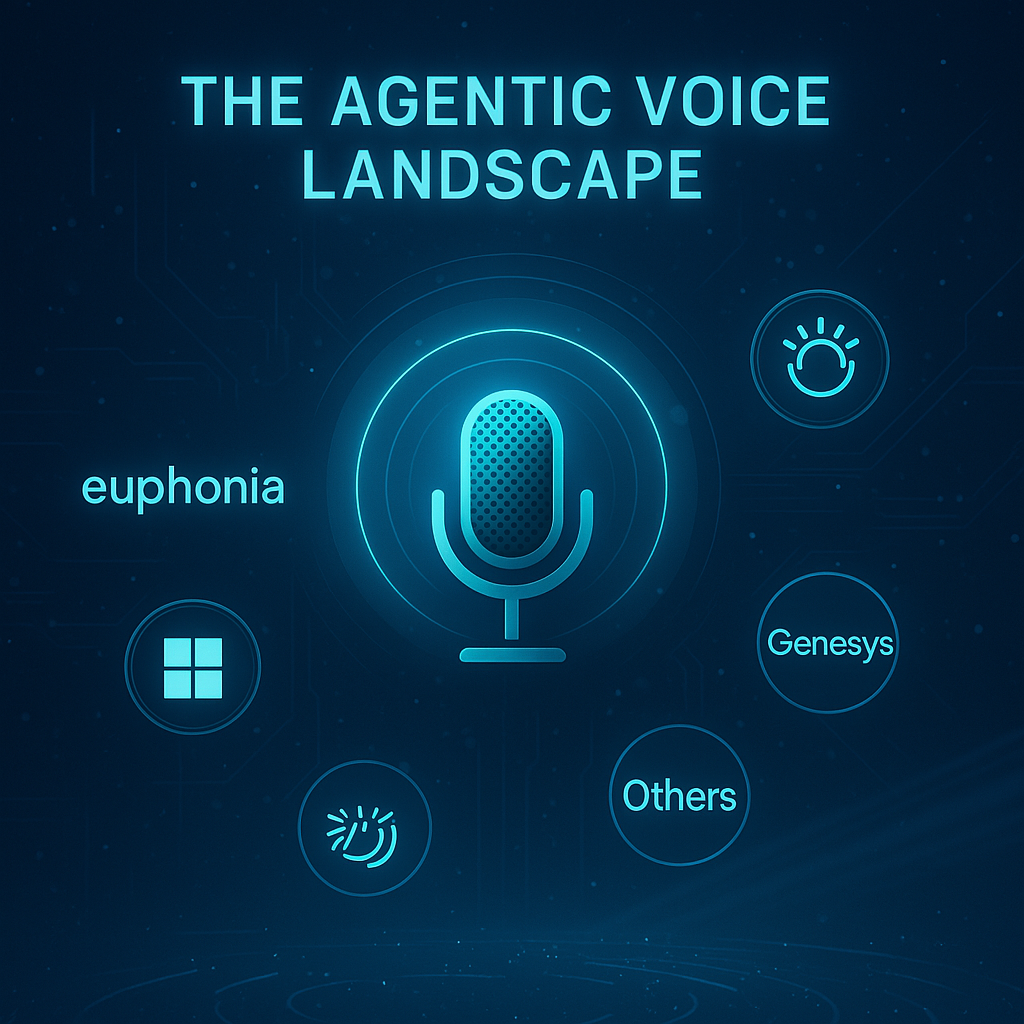
Market Overview
The global AI agentic voice market is experiencing remarkable growth, projected to expand from $2.4 billion in 2024 to $47.5 billion by 2034, representing a compound annual growth rate (CAGR) of 34.8%. This rapid expansion is driven by several key factors:
Market Size and Regional Distribution
- Global Market: $2.4 billion in 2024, growing to $47.5 billion by 2034
- North America: Leading with 40.2% market share (approximately $0.9 billion in 2024)
- United States: Dominant player with $1.2 billion market size in 2024 Key Market Segments
- Voice AI Platform segment: Holds 76.4% of the market in 2024
- On-Premises deployment: Commands 62.6% of the market share
- Large enterprises: Account for 70.5% of the market
- Banking, Financial Services, and Insurance (BFSI): Leading industry adopter at 32.9% market share Market Drivers
- Trade war: World-wide recession leading to search for cost reduction
- Digital Transformation: Businesses across industries are embracing AI technologies to enhance customer experiences and operational efficiency
- Customer Experience Focus: Growing emphasis on providing seamless, 24/7 customer service
- Cost Reduction Pressures: Organizations seeking to automate routine tasks to reduce operational costs
- Technological Advancements: Continuous improvements in natural language processing, speech recognition, and AI capabilities
- Integration Capabilities: Increasing ability to seamlessly connect with existing enterprise systems
Market Challenges
- Data Privacy Concerns: Voice interactions involve processing potentially sensitive user information
- Linguistic Limitations: Voice AI systems still struggle with understanding diverse accents and dialects 2
- Technical Complexity: Implementation often requires significant technical expertise
- User Trust: Building confidence in AI voice systems remains a challenge
Market Trends
- Increasing Realism: Voice AI is becoming increasingly natural and human-like
- Specialized Solutions: Growing development of industry-specific voice AI solutions
- Multilingual Capabilities: Expansion of language support to serve global markets
- Integration with Other Technologies: Combining voice AI with other technologies like IoT and AR/VR
- SMB Adoption: Increasing accessibility for smaller businesses through simplified solutions
Competitive Landscape
Key Competitors Overview
The AI agentic voice market features a diverse range of competitors, from tech giants to specialized startups. These competitors can be categorized into several groups:
Tech Giants
- Google Dialogflow: Leverages Google’s advanced ML capabilities for custom AI voice assistants
- Amazon Lex: Integrates with AWS ecosystem for scalable voice agent solutions
- Microsoft Dynamics 365: Offers enterprise-grade AI with tight Microsoft ecosystem integration
- IBM Watson Assistant: Provides deep learning capabilities with industry-specific customizations
Specialized AI Voice Platforms
- PlayHT: Known for ultra-realistic AI voice agents with advanced speech synthesis
- Lindy.ai: Offers no-code AI phone agents for both inbound and outbound calls
- Bland.ai: Provides AI voice agents with scripting capabilities for enter- prises
- Synthflow: Specializes in no-code voice agent building for AI call centers
- Vapi: Focuses on multilingual voice agents with API connections
- Ringly.io: Excels in AI call summaries and analytics 3
- Genesys Bots: Delivers enterprise-grade AI with omnichannel capabilities
- Teneo.ai: Offers scalable voice AI solutions for large enterprises
Competitive Positioning Map
The competitive landscape can be mapped along two key dimensions:
- Technical Complexity vs. Ease of Use: From developer-focused solutions requiring significant technical expertise to no-code platforms accessible to non-technical users
- Target Market Size: From SMB-focused solutions to enterprise-grade platforms
Within this framework:
- Enterprise/High Complexity Quadrant:
- Microsoft Dynamics 365
- IBM Watson
- Genesys
- Teneo.ai
- Enterprise/Ease of Use Quadrant:
- Amazon Lex
- Bland.ai
- SMB/High Complexity Quadrant:
- Google Dialogflow
- Vapi
- SMB/Ease of Use Quadrant:
- Euphonia.ia
- Lindy.ai
- Synthflow
- Ringly.io
Key Differentiators Among Competitors Technical Capabilities
- Voice Realism: PlayHT leads in voice quality and natural-sounding interactions
- Language Support: Vapi excels in multilingual capabilities
- Integration Depth: Microsoft and IBM offer the most comprehensive enterprise integrations
- Analytics: Ringly.io provides superior call analytics and insights Business Model
- Pricing Structure: Ranges from usage-based (Google, Amazon) to subscription-based (Euphonia.ia, Lindy.ai)
- Target Segments: Some focus exclusively on enterprises (Teneo.ai, Genesys), while others target SMBs (Euphonia.ia, Synthflow)
- Implementation Approach: From self-service (Euphonia.ia, Lindy.ai) to consultative (IBM, Microsoft) Use Case Focus
- Inbound Specialists: Euphonia.ia focuses primarily on inbound call handling
- Outbound Capabilities: Bland.ai and Lindy.ai offer strong outbound features
- Omnichannel: Microsoft and Genesys provide comprehensive omnichan- nel solutions
- Analytics-First: Ringly.io emphasizes insights and reporting 4
Competitive Trends
- Consolidation: Larger players are acquiring specialized AI voice startups to expand capabilities
- Vertical Specialization: Increasing focus on industry-specific solutions
- Feature Expansion: Growing trend toward comprehensive platforms vs. specialized tools
- Pricing Pressure: Competition driving more transparent and flexible pricing models
- Low-Code Movement: Shift toward more accessible platforms requiring less technical expertise